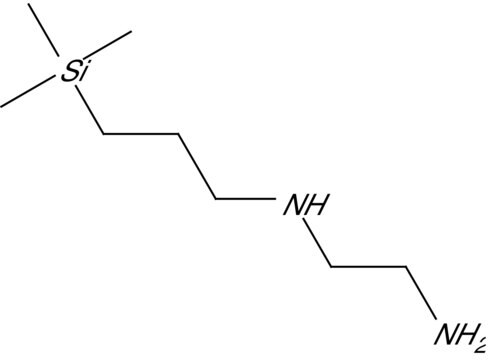Kluczowe dokumenty
60736
Silica gel Inorganic Sorbent
high-purity grade, 35-70 mesh
About This Item
Polecane produkty
product name
Silica gel, high-purity grade, 40, 35-70 mesh, for column chromatography
klasa czystości
for column chromatography
high-purity grade
Poziom jakości
Postać
powder or crystals
metody
LPLC: suitable
powierzchnia
350 m2/g
macierz
Silica
grupa aktywna macierzy
silica
wielkość cząstki
0.2-0.5 mm (35-70 mesh ASTM)
35-70 mesh
wielkość porów
90 Å mean pore size
tw
2230 °C
mp
>1600 °C
metoda separacji
hydrophilic interaction (HILIC)
ciąg SMILES
O=[Si]=O
InChI
1S/O2Si/c1-3-2
Klucz InChI
VYPSYNLAJGMNEJ-UHFFFAOYSA-N
Szukasz podobnych produktów? Odwiedź Przewodnik dotyczący porównywania produktów
Powiązane kategorie
Opis ogólny
a. Aquagel - pores are filled with water
b. Xerogel - by the process of evaporation, aqueous phase in the pores are removed
c. Aerogel - solvent removed by supercritical extraction
Zastosowanie
Kod klasy składowania
11 - Combustible Solids
Klasa zagrożenia wodnego (WGK)
nwg
Temperatura zapłonu (°F)
Not applicable
Temperatura zapłonu (°C)
Not applicable
Środki ochrony indywidualnej
Eyeshields, Gloves, type N95 (US)
Wybierz jedną z najnowszych wersji:
Masz już ten produkt?
Dokumenty związane z niedawno zakupionymi produktami zostały zamieszczone w Bibliotece dokumentów.
Klienci oglądali również te produkty
Nasz zespół naukowców ma doświadczenie we wszystkich obszarach badań, w tym w naukach przyrodniczych, materiałoznawstwie, syntezie chemicznej, chromatografii, analityce i wielu innych dziedzinach.
Skontaktuj się z zespołem ds. pomocy technicznej
